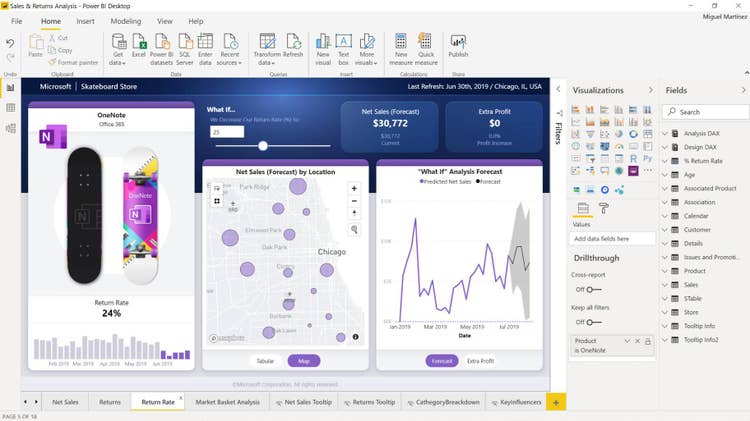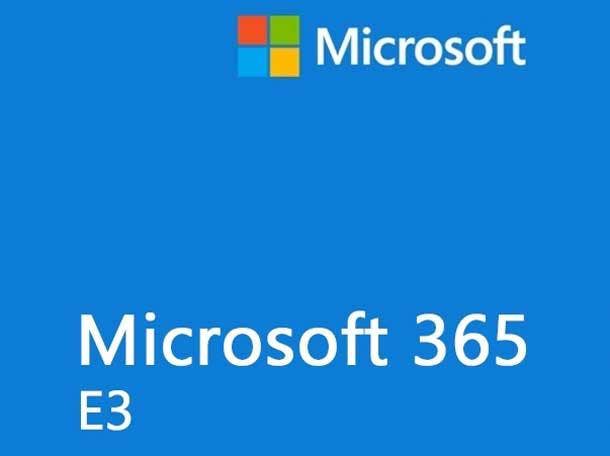Microsoft’s Nadella: Public Cloud Will Be ‘The Big Winner’ In Down Economy
‘The big winner in all of this will be public cloud because public cloud helps businesses offset the risk of demand risk,’ Microsoft CEO Satya Nadella says.

Cloud vendors have finally acknowledged that a slowing economy has affected their profits, but Microsoft CEO Satya Nadella sees a weaker global economy as the chance to prove the need of public cloud.
Public cloud allows Microsoft customers to control ramping up and ramping down based on demand, which could also help customers with growing energy costs, Nadella said during Microsoft’s latest quarterly earnings call.
“The thing, though, from a customer perspective – the best way for them to align their spend with what is uncertain demand is to move to the cloud,” Nadella said. “So we see the value prop of the cloud. So the big winner in all of this will be public cloud because public cloud helps businesses offset the risk of demand risk.”
[RELATED: Microsoft Reports PC Trouble, Cloud Growth, SMB ‘Deal Moderation’]
How is Microsoft performing?
While Microsoft Chief Financial Officer Amy Hood handled much of the financial bad news during the company’s earnings report for the first quarter of the company’s 2023 fiscal year – a quarter that ended Sept. 30 – Nadella still had plenty of measures to show the company’s growth with established and new products.
Azure Arc has more than 8,500 customers, more than double a year ago, Nadella said. Azure Machine Learning revenue has increased more than 100 percent for four quarters in a row. And GitHub is at $1 billion in annual recurring revenue with more than 90 billion people using the service.
At least three investment banks reported confidence in Microsoft’s long-term abilities.
“Our thesis remains that the cloud and underlying Office 365/Windows ecosystem is going to comprise a bigger and bigger piece of Redmond going forward and will ultimately spur growth and margins (and the multiple) into FY23/FY24 despite this downturn,” Wedbush wrote in a report Wednesday. “We believe the shift to cloud is still less than 50% penetrated and represents a massive opportunity for Nadella & Co. going forward.”
It continued: “Our conversations with customers and partners underscores our confidence that MSFT can ride out this economic storm and ultimately be in a stronger position in the other side with cost cutting and strategic measures already in place.”
A Wednesday report by investment bank KeyBanc said that “despite the cyclical headwinds to Azure and Windows/ PCs, we remain bullish long term on MSFT‘s hyperscale cloud and integrated infrastructure stack, application development platform, and expanding business application portfolio.”
A report from Credit Suisse said that although a deceleration in small and midsize business consumption and headwinds to Microsoft’s Enterprise Mobility + Security business
“will likely continue to weigh on near-term growth, we view the negative impact of the currently elevated optimization cycle as more temporary. Similar to past optimization cycles that weighed on growth for ~1-2 quarters, an upswing in new workloads then followed that drove growth back toward more normalized trends.”
Here’s more of what Nadella had to say during Microsoft’s latest earnings call.

Microsoft In ‘Changing Economic Times’
I want to outline the principles that are guiding us through these changing economic times. First, we will invest behind categories that will drive the long term secular trend where digital technology as a percentage of world‘s GDP (gross domestic product) will continue to increase.
Second, we‘ll prioritize helping our customers get the most value out of the digital spend so that they can do more with less. And finally, we will be disciplined in managing our cost structure.
With that context, this quarter, the Microsoft Cloud again exceeded $25 billion in quarterly revenue, up 24 percent and 31 percent in constant currency.
And based on current trends continuing, we expect our broader commercial business to grow at around 20 percent in constant currency this fiscal year as we manage through the cyclical trends affecting our consumer business. … Moving to the cloud is the best way for organizations to do more with less today. It helps them align their spend with demand and mitigate risk around increasing energy costs and supply chain constraints.
We‘re also seeing more customers turn to us to build and innovate with infrastructure they already have. … We now have more than 8,500 (Azure) Arc customers, more than double the number a year ago. … We are the only cloud provider with direct and secure access to Oracle databases running in Oracle Cloud Infrastructure, making it possible for companies like FedEx, GE and Marriott to use capabilities from both companies.
And with Azure confidential computing, we‘re enabling companies in highly regulated industries, including RBC (Royal Bank of Canada) to bring their most sensitive applications to the cloud.

Microsoft Data, AI, Developer Offerings
With our Microsoft Intelligent Data Platform, we provide a complete data fabric helping customers cut integration tax associated with bringing together siloed solutions. … Cosmos DB is the go-to database powering the world‘s most demanding workloads at limitless scale. Cosmos DB now supports PostgreSQL making Azure the first cloud provider to offer a database service that supports both relational and NoSQL workloads.
And in AI, we are turning the world‘s most advanced models into platforms for customers. Earlier this month, we brought the power of Dall-E to Azure OpenAI service, helping customers like Mattel apply the breakthrough image-generation model to commercial use cases for the first time.
In Azure, machine learning provides industry-leading MLOps (machine learning operations), helping organizations like 3M deploy, manage and govern models.
All up, Azure ML revenue has increased more than 100 percent for four quarters in a row. … We have the most complete platform for developers to build cloud-native applications.
For years since our acquisition, GitHub is now at $1 billion in annual recurring revenue. And GitHub’s developer-first ethos has never been stronger. More than 90 million people now use the service to build software for any cloud on any platform, up three times.

Microsoft Business Applications
We‘re helping customers save time and money with our end-to-end suite spanning low-code, no-code tools; robotic process automation; virtual agents and business intelligence.
Power BI is the market leader in business intelligence in the cloud and is growing faster than competition as companies like Walmart standardize on the tool for reporting and analytics.
Power Apps is the market leader in low-code, no-code tools and has nearly 15 million monthly active users, up more than 50 percent compared to a year ago.
Power Automate has more than 7 million monthly active users and is being used by companies like Brown-Forman, Komatsu, … T-Mobile to digitize manual business processes and save thousands of hours of employee time.
And we‘re going further with new AI-powered capabilities in Power Automate that turn natural language into advanced workflows. … All up, more than 400,000 organizations now use our business applications.

Microsoft 365, Teams And Viva
Microsoft Teams is the de facto standard for collaboration and has become essential to how hundreds of millions of people meet, call, chat, collaborate and do business.
As we emerge from the pandemic, we are retaining users we‘ve gained and are seeing increased engagement, too. Users interact with Teams 1,500 times per month on average.
In a typical day, the average commercial user spends more time in Teams chat than they do in email. And the number of users who use four or more features within Teams increased over 20 percent year over year.
Teams is becoming a ubiquitous platform for business process. Monthly active enterprise users running third-party and custom applications within Teams increased nearly 60 percent year over year, and over 55 percent of our enterprise customers who use teams today also buy Teams Rooms or Teams Phone.
Teams Phone provides the best-in-class calling. PSTN (public switched telephone network) users have grown by double digits for five quarters in a row.
We‘re bringing Teams Rooms to a growing hardware ecosystem, including Cisco’s devices and peripherals, which will now run Teams natively.
And we‘re creating a new category with Microsoft Places to help organizations evolve and manage this space for hybrid and in-person work. Just like Outlook calendar orchestrates when people can meet and collaborate, Places will do the same for where.
We also announced Teams Premium, addressing enterprise demands for advanced meeting features like conditional security options and intelligent meeting recaps. … We also built a completely new suite for our employee experience platform, Microsoft Viva, which now has more than 20 million monthly active users and companies … And we are extending Viva to meet role-specific needs. Viva Sales is helping salespeople at companies like Adobe, Crayon and PwC reclaim their time by bringing customer interactions across Teams and Outlook directly into their CRM (customer relationship management) system.

Windows And Security
Despite the drop in PC shipments during the quarter, Windows continues to see usage growth.
All up, there are nearly 20 percent more monthly active Windows devices than pre-pandemic. And on average, Windows 10 and Windows 11 users are spending 8.5 percent more time on their PCs than they were two-and-a-half years ago.
And we are seeing larger commercial deployments of Windows 11. Accenture, for example, has deployed Windows 11 to more than 450,000 employees’ PCs, up from just 25,000 seven months ago. … We‘re the only company with integrated end-to-end tools spanning security, compliance, identity and device management, and privacy across all clouds and platforms.
More than 860,000 organizations across every industry from BP and Fujifilm to ING Bank, iHeartMedia and Lumen Technologies now use our security solutions, up 33 percent year over year.
They can save up to 60 percent when they consolidate our security stack. And the number of customers with more than four workloads have increased 50 percent year over year.
More organizations are choosing both our XDR (extended detection and response) and cloud-native SIEM (security information and event management) to secure their entire digital estate. The number of E5 customers who also purchased Sentinel increased 44 percent year over year.
And as threats become more sophisticated, we are innovating to protect customers. New capabilities in Defender help secure the entire DevOps (development operations) lifecycle and manage security posture across clouds. And (Microsoft identity and access offering) Entra now provides comprehensive identity governance for both on-premise and cloud-based user directories.

Microsoft Focused On Azure
Our investment profile here is that this is the largest TAM (total addressable market) where we own a large number, have good growth rates with the kind of volatility you‘re seeing.
So we‘re going to stay focused on it. And in this particular period, I think we are going to optimize for long-term customer loyalty by proactively helping them optimize their spend, which I think is the right thing for us to be doing as a company on behalf of our shareholders, long term. … The way we see it is overall macro(economic conditions) will mean that everybody’s going to optimize their bill.
In fact, as Amy (Hood, Microsoft chief financial officer) said, our job No 1 for large swaths of our sort of even customer-facing organizations is to proactively help them optimize.
In fact, our incentives in our customer success teams are lined up with them helping customers go do more with less.
So that‘s sort of one side. The thing, though, from a customer perspective – the best way for them to align their spend with what is uncertain demand is to move to the cloud.
So we see the value prop of the cloud. So the big winner in all of this will be public cloud because public cloud helps businesses offset the risk of demand risk.
The other side … is the risk around supply chain or energy costs. And so that‘s another one. The best way to hedge against energy cost and be, in fact, more energy efficient is to move to the cloud. … For us, we look at this and say this is a period where cloud’s going to gain share because we’re still in the early innings of adoption.
And so we just want to invest going into it with that mindset to build long-term customer loyalty.

The AI Moment
The OpenAI partnership is a very critical partnership for us. Perhaps it‘s sort of important to call out that we built the supercomputing capability inside of Azure, which is highly differentiated.
The way compute and the network, in particular, come along, come together in order to support this large-scale training of these platform models or foundation models is being very critical. That‘s what’s driven, in fact, the progress OpenAI has been making.
And of course, we then productize it as part of Azure OpenAI services. And that‘s what we’ll see both be used by our own first-party applications – whether it‘s the GitHub Copilot or Designer. Even inside of Edge. And then of course, the third party, like Mattel.
And so we’re very excited about it. We have a lot, sort of, more (to) talk about when it comes to the GitHub universe. You‘ll see more advances on GitHub Copilot, which is off to a fantastic start.
But overall, this is an area of huge investment. The AI moment clearly has arrived. And it‘s going to be part of every product. But, in fact, I’ll mention our Power Platform, because that’s another area we are innovating in terms of incorporating all of these AI models.